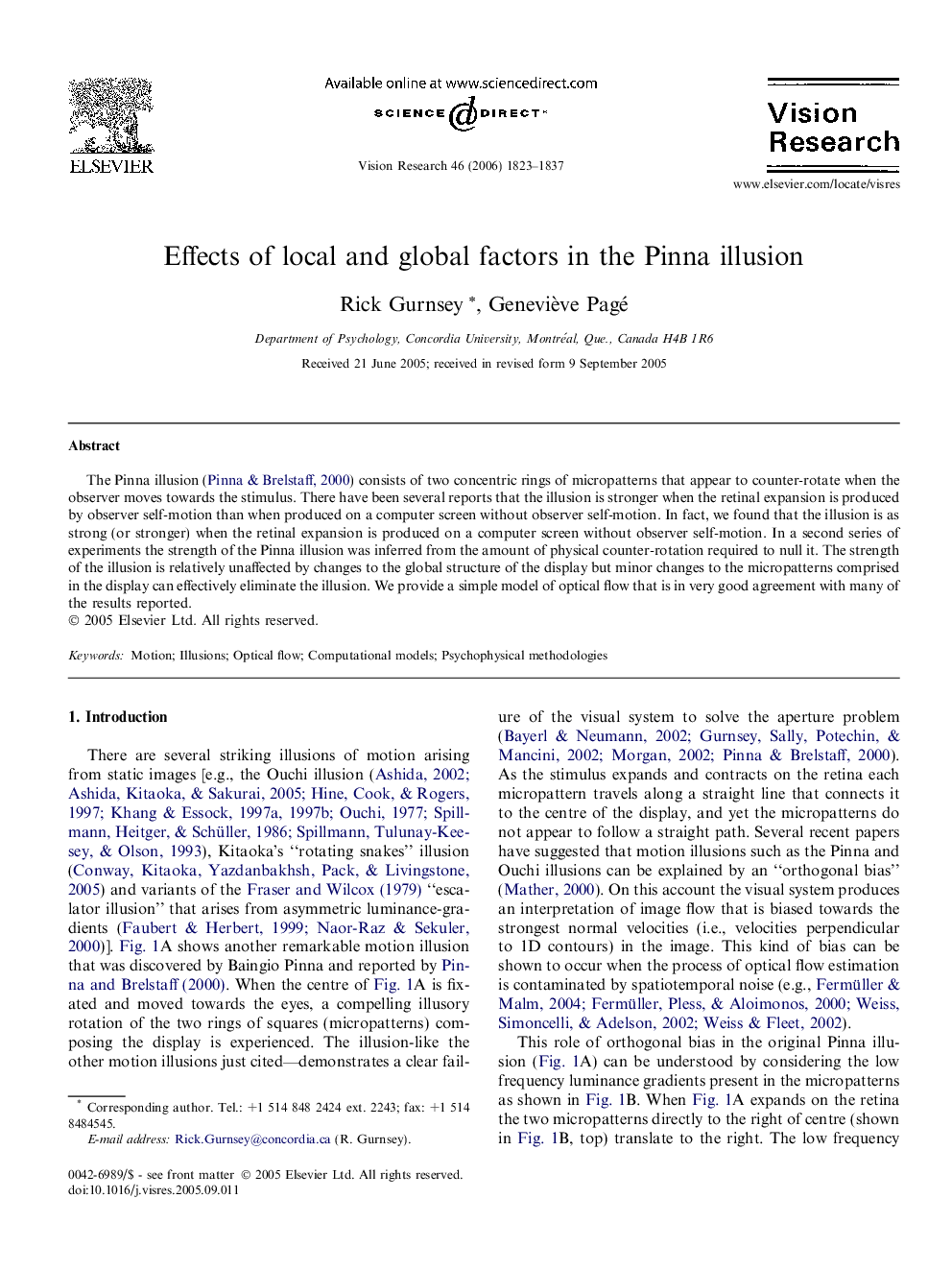| Article ID | Journal | Published Year | Pages | File Type |
|---|---|---|---|---|
| 4036730 | Vision Research | 2006 | 15 Pages |
The Pinna illusion (Pinna & Brelstaff, 2000) consists of two concentric rings of micropatterns that appear to counter-rotate when the observer moves towards the stimulus. There have been several reports that the illusion is stronger when the retinal expansion is produced by observer self-motion than when produced on a computer screen without observer self-motion. In fact, we found that the illusion is as strong (or stronger) when the retinal expansion is produced on a computer screen without observer self-motion. In a second series of experiments the strength of the Pinna illusion was inferred from the amount of physical counter-rotation required to null it. The strength of the illusion is relatively unaffected by changes to the global structure of the display but minor changes to the micropatterns comprised in the display can effectively eliminate the illusion. We provide a simple model of optical flow that is in very good agreement with many of the results reported.
